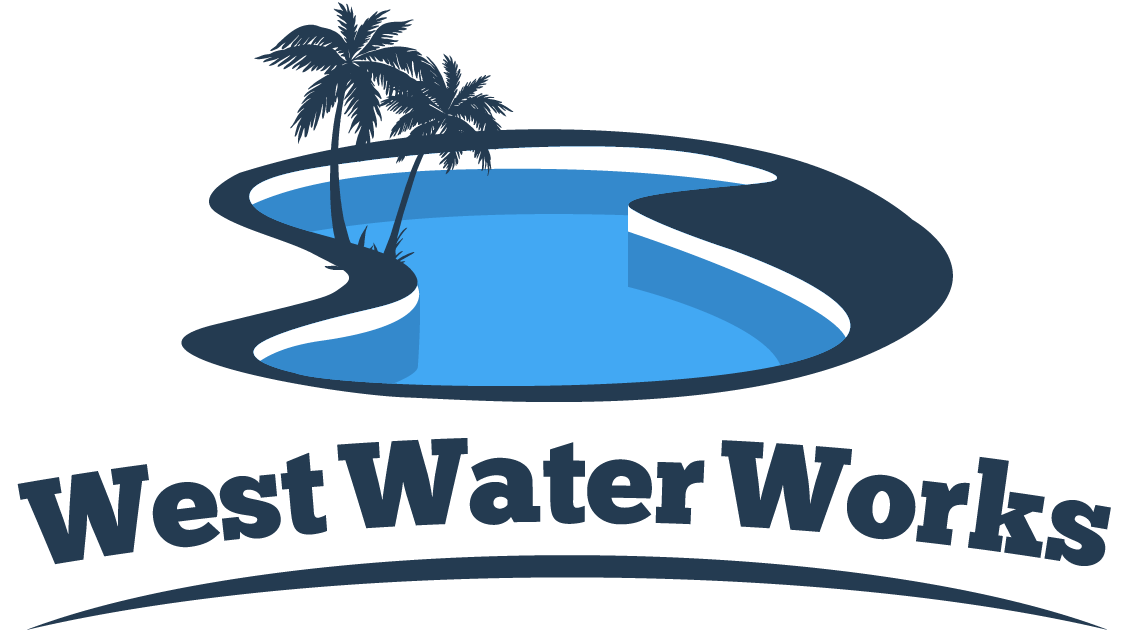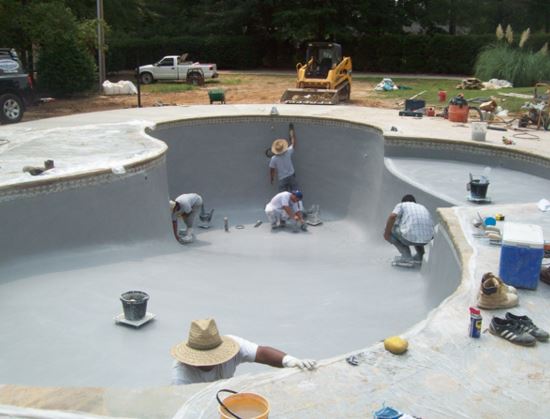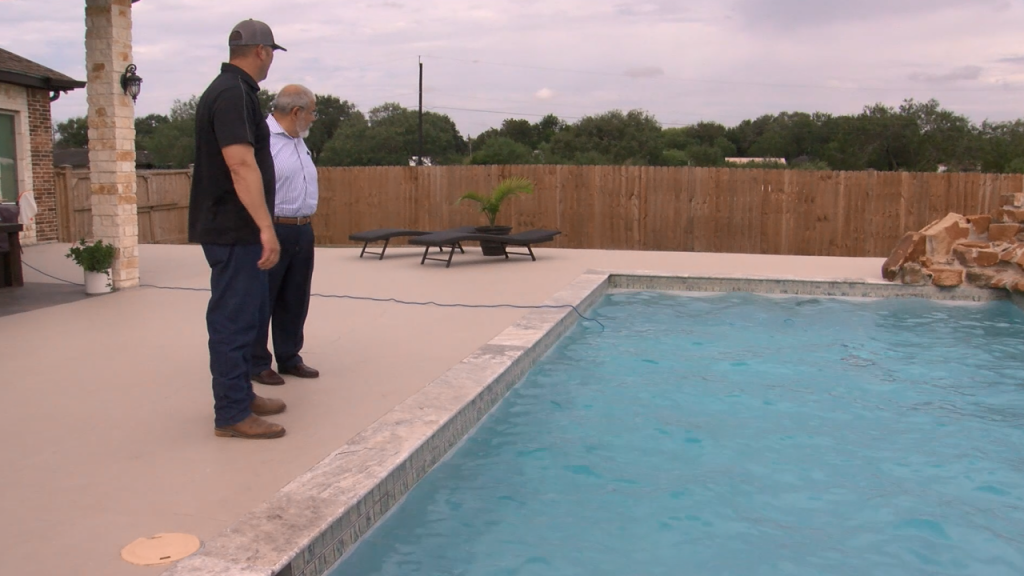POOL RESURFACING CONTRIBUTING TO PROPER MAINTENANCE OF POOL:
Pool Resurfacing replaces the surface layer between the shell and the water. It needs replacement because of the factors causing it to deteriorate. One can maintain their swimming pools by keeping a fixed budget in their mind because our workers can get the job done according to the client’s package. Resurface pool can get coated with plaster, pebble, and fiberglass over the existing surface. The cost for resurfacing has several variables, including size, shape, finishing material, and customizing the packages according to the client’s specifications.
Swimming pool resurfacing with a basic white plaster finish costs around $3000 – $5500. If you prefer a fancy finishing, it might cost around $5500 – $20000. Resurfacing swimming pools is a multi-step process that takes about 9-15 days and depends on the pool size and weather. We train our workers to use efficient ways, products, and environmentally friendly methods. We suggest our clients treat the pool without using chemicals. Once you stop using chemicals to treat the pool before draining, it becomes safer to drain into the environment. Before the resurfacing work begins, all the pool water gets drained, which might take 15 hours to complete. Resurfacing the swimming pool requires the swimming pool to be empty to let the preparation begin. Our professional workers remove the old material and prepare the swimming pool to install the new material.
We then move towards the sealing phase of resurfacing the swimming pool. Once the old material gets removed, our workers seal all the plumbing to ensure that the finishing material can be applied. Now, it’s time for material installation. When all the pool preparations get set, we then apply new material. When all the new material gets installed, we closely monitor the pool, ensuring it hits the waterline. Lastly, we analyze every aspect before the swimming pool is ready for use. We assign the job of pool resurfacing to our efficient pool technicians.
FOLLOWING ARE THE WAYS TO RESURFACE A SWIMMING POOL:
- Vinyl liners made from fiberglass:
The liners need to get replaced after six to eight years. Vinyl does not absorb chemicals and is less costly to maintain. Fiberglass has proved as a popular and smart choice for a resurfaced pool. Fiberglass begins with a multi-layer application process. It lasts longer than concrete or plaster and absorbs fewer chemicals.
- Concrete pools:
Concrete shells have a finished cement-based material known as plaster that seals and protects the shell. If the client demands, we coat the plaster with paint, which serves as a substrate for tile. With time the plaster degrades, so our workers treat them by repairing the cracks. We provide pool resurfacing services making sure the entire pool has got prepared. Our professionals remove the loose plaster and roughen the surface to let the new layers of plaster bond with it.
Resurface pool involves preparing the existing pool for a new surface coat by hydro blasting or chipping away the old surface. Our professionals apply a finished coat made of glass beads and exposed pebble and add a plaster. A resurfacing project takes about 10 to 15 days to finish. We believe a resurfaced pool increases your property value and makes your investment worth it.
Building a swimming pool requires much more responsibility and a lot of maintenance. Among all the essential maintenance factors, the most important one is resurfacing. Even if you change the swimming pool style, you need to provide it with resurfacing services. The warning signs for swimming pool resurfacing include stains, cracks, leaking, chalky residue, and drops in the water level.
THE PROCESS FOR SWIMMING POOL RESURFACING:
- The first step for pool resurfacing comprises draining the pool. We assign an employee for the swimming pool, and his job is to prepare the site. The employer confirms if all the lights are in working condition and then drops a submersible pump into your swimming pool.
- The second step of the pool resurfacing involves the preparation of the pool surface. Our workers remove the old damaged surface material and apply the new surface material to the client’s specifications.
- The third step is adding decorative features and details to the swimming pool area. You might consider such minor details irrelevant, but they enhance the overall look of the outdoor living space. Our workers can decorate the living spaces around the swimming pool area according to the client’s demands, so you do not need to hesitate before hosting parties at your place.
- The fourth step is sealing the plumbing to ensure your pool is watertight and ready for the selected pool surface finish.
- The next step emphasizes the pool material. It involves the installation of the pool surface finish material. We believe material for a swimming pool makes a huge difference since you can find your kids playing around the swimming area.
- This step is related to the acid wash. It is a standard process since we hire efficient, professional, and highly trained workers.
- Cleaning up requires some time, and if the swimming pool is on a larger scale, we install specified materials and solutions and assign tasks to our workers. Our workers finish the general clean-up and then start filling the pool.
- The final step involves initial water treatment or also called surface curing. It is the essential step for enhancing the look and life of your new pool surface material. Apart from these steps, the pool resurfacing process requires regular monitoring and service during the first week of the curing process.
We ensure to provide you with the right kind of pool surface, which would last for a longer time. We give professional advice through our expertise to our clients and help them through guidelines in making the right choice. Pool resurfacing is a kind of expense which gets required to keep the swimming pool aesthetically pleasing. One must avoid the following mistakes during the resurfacing of a swimming pool.
-
Removing old concrete can be costly:
We would never recommend removing the old concrete since it would be extremely costly and must get removed once you receive a threat. When there is a threat to the structural integrity of your pool, you can only remove it in that case.
Pool resurfacing does not increase the value of your home or pool if you remove the old concrete. We would recommend you utilize the concrete overlay instead. An overlay of pool resurfacing concrete consists of cement, resins, and other additives, which acts as another layer on your pool floor.
-
Overlooking the drainage system :
Proper drainage is essential since it keeps the swimming pool deck functional and visually appealing to the eyes. Without a proper, well-maintained drainage system, water gets left on the deck and causes corrosion, rot, and discoloration. If one ignores the drainage system, they might invite harmful bacteria and debris, causing the filter to work over time.
RESURFACING GUNITE POOL:
One can find stains in all colors, sizes, and shapes. The stains caused due to the production of algae, leaves, and other debris produced naturally, or chemical inputs get difficult to remove. Resurfacing gunite pool options have the most affordable choice, including pool plaster and pebble finish. Pebble finish is like the pool plaster finish added to the mixture of sand and cement. The pebble finish is durable and resistant to stains. The price for pool plaster has a shorter span than the rest of the options. This pool finish can serve operational purposes for 7 to 8 years. You can achieve resurfacing the gunite pool or enhance the swimming pool features through remodeling from our services. Gunite pools can provide your swimming pool with a touch of elegance, but you need to invest in its maintenance. Pool resurfacing can get done through plaster, aggregate, or tile. Plaster is although in white but our workers can dye it according to the client’s demands. If you are low on your budget, you can opt for plaster since it is simple, classy, and less costly. But one needs to carefully invest in its maintenance and acid washing every 4 to 6 years.
Aggregate is made of pebbles, quartz, or glass beads, giving a shiny and smooth look just like the pool surface you desire. Tile gets constructed with porcelain, stone, or glass and is available in various colors and styles. We suggest our customers opt for a tile with a good budget since it is long-lasting and easy to clean. Tile is resistant to fire and heat and produces the results clients want.
POOL REPLASTERING
Pool resurface before and after face massive difference!
One must consider pool replastering if you observe an uneven pool surface or stains on the pool surface. If you notice leakage in your pool or an imbalance of chemicals in the pool water, you must replaster immediately. Pool replastering must be considered if you face any plaster degradation or improper water balance. A swimming pool must get replastered about every 20 to 25 years. A replaster transforms the look and might change the colors according to the client’s demands. If you notice any bare spots or cracks, it must get fixed. Pool resurfaces before and after, highlights the finishes, and gets done within the shortest time. Pool chemicals require chemical maintenance. It requires your attention to balancing the chemicals to prevent scaling and hydration problems. We suggest our trainers and workers pre-dissolve all chemicals before adding them to the pool water. We refrain from adding chlorine or other sanitizers for the first 72 hours. We analyze each process and address the Alkalinity and pH. Once we get satisfied that the results of pH and Alkalinity range with the expected value, we proceed with the process.
As the plaster cures, the pH level rises and maintains the proper water chemistry. We suggest our workers brush the pool since it opens the pores of the plaster to allow appropriate curing and removes dust from the surface. If you notice plaster dusting during brushing and water becoming cloudy, it would go away with proper treatment and using the correct cleaning solutions. Pool refinishing or pool resurfacing involves removing and replacing the top layer of the pool surface. If you want to remodel your swimming pool, you must improve the appearance of the existing pool by refinishing the deck with modern decking and adding pool heating. One can also incorporate water features or a water slide for children to keep them entertained. Pool refinishing can change the shape of a swimming pool by incorporating a hot tub. Once you get our expertise for remodeling your existing swimming pools, you need to decide how it fits into your budget and home maintenance plans. Then you need to discuss the finishes of the swimming pool area, application methods, time estimates, and other technical issues.



